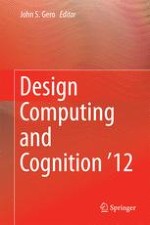
2014 | OriginalPaper | Buchkapitel
Analogical Problem Evolution in Biologically Inspired Design
verfasst von : Michael E. Helms, Ashok K. Goel
Erschienen in: Design Computing and Cognition '12
Verlag: Springer Netherlands
Aktivieren Sie unsere intelligente Suche, um passende Fachinhalte oder Patente zu finden.
Wählen Sie Textabschnitte aus um mit Künstlicher Intelligenz passenden Patente zu finden. powered by
Markieren Sie Textabschnitte, um KI-gestützt weitere passende Inhalte zu finden. powered by